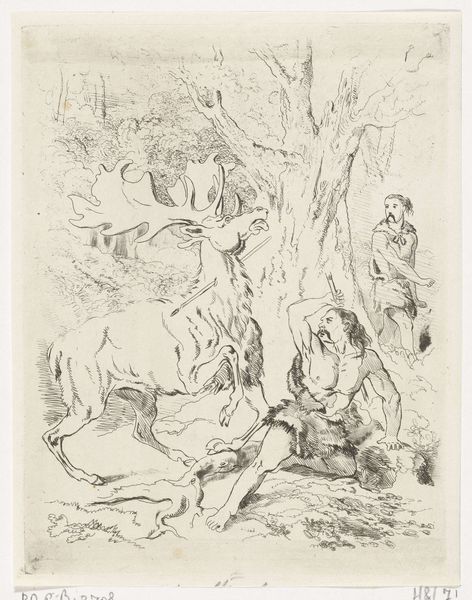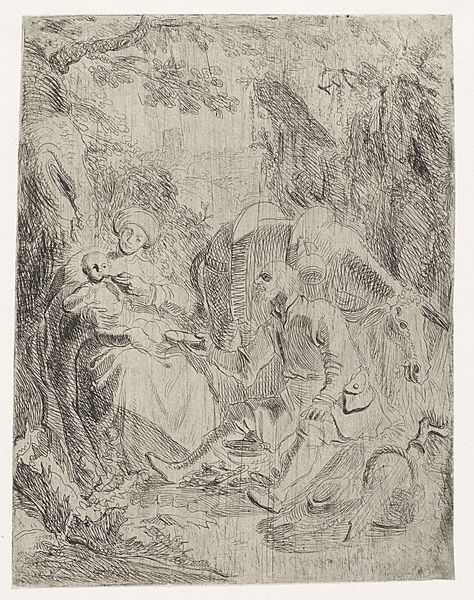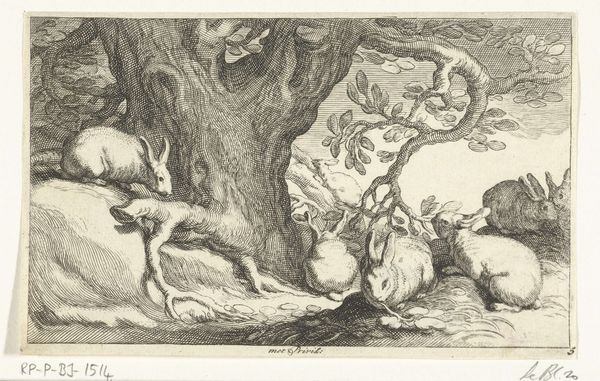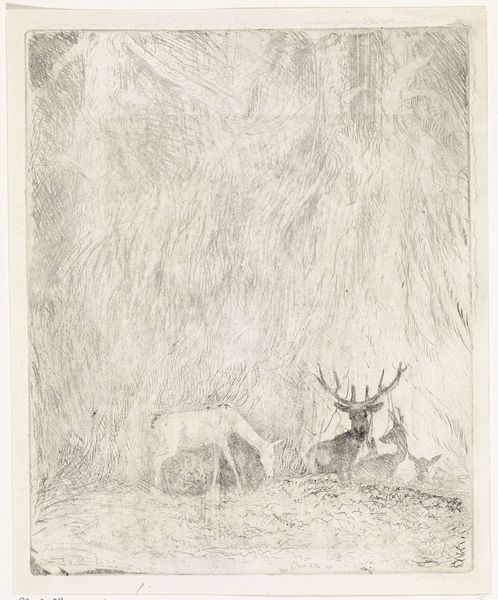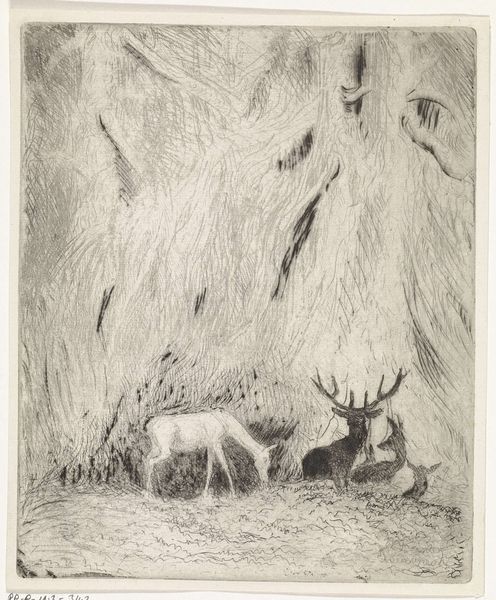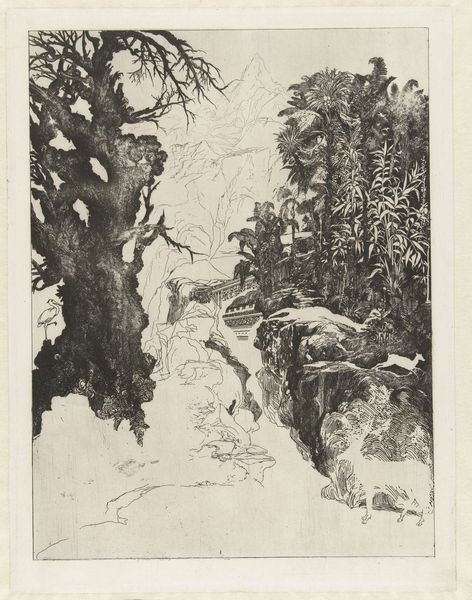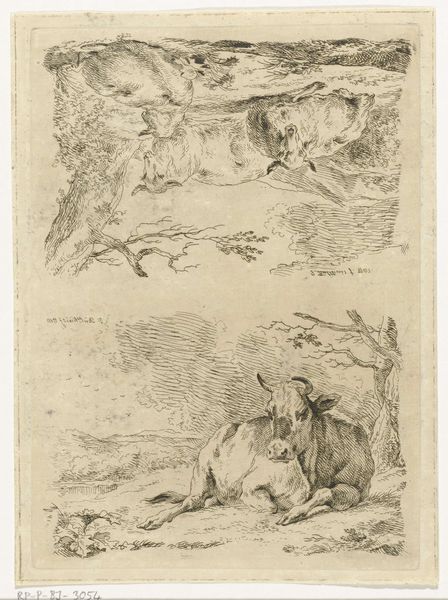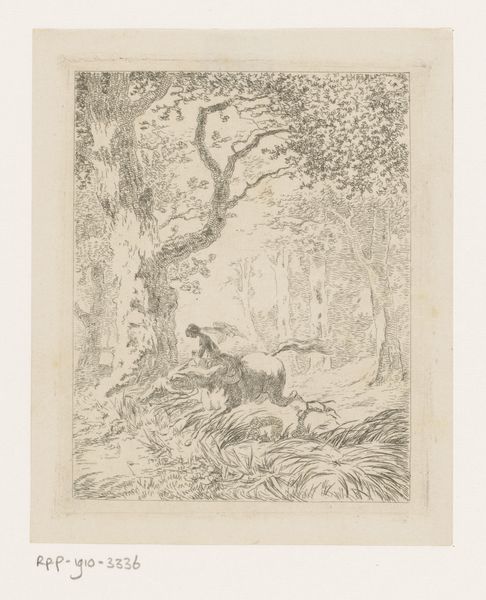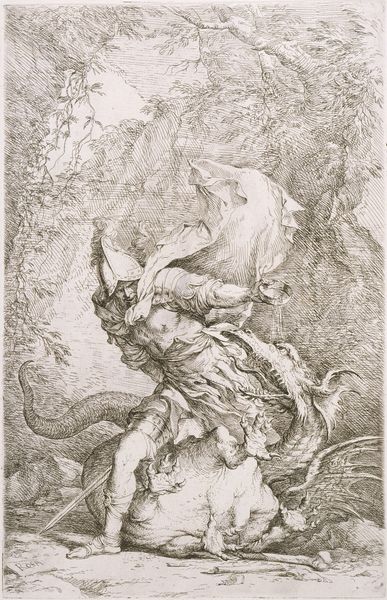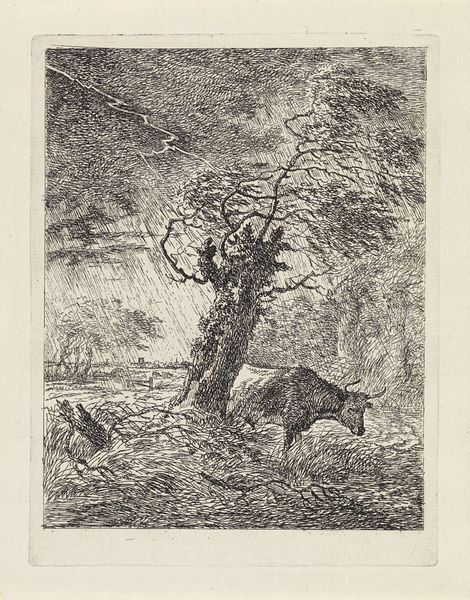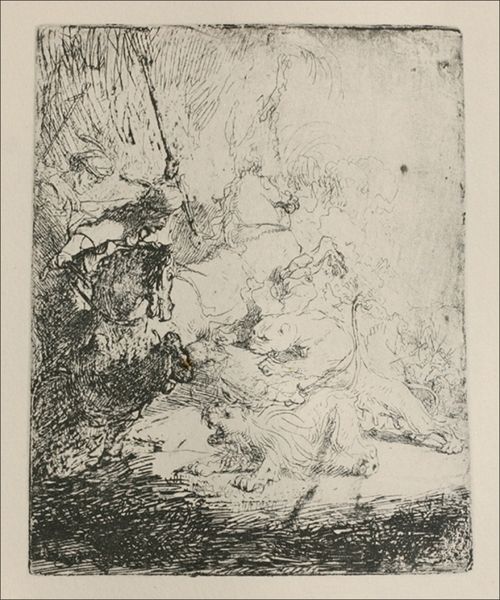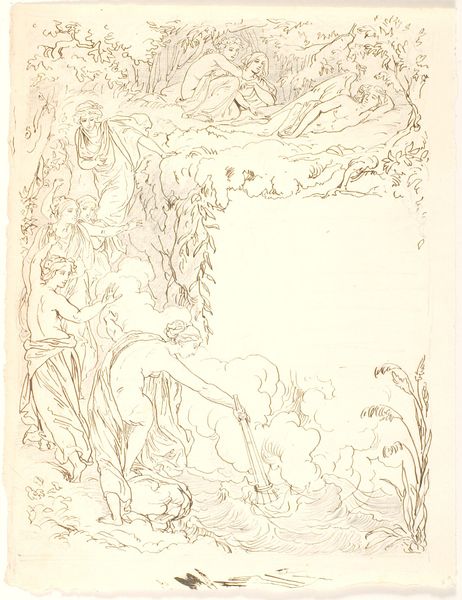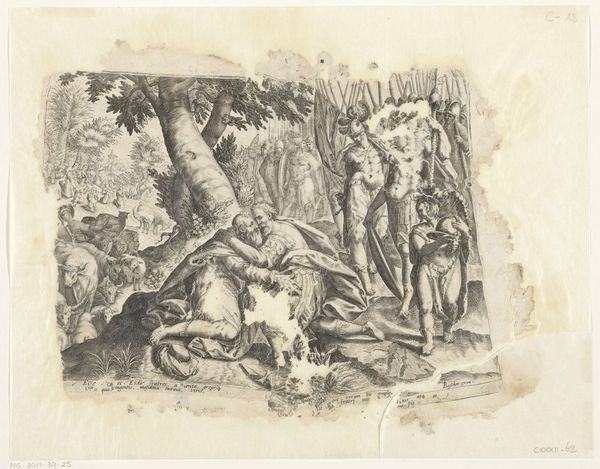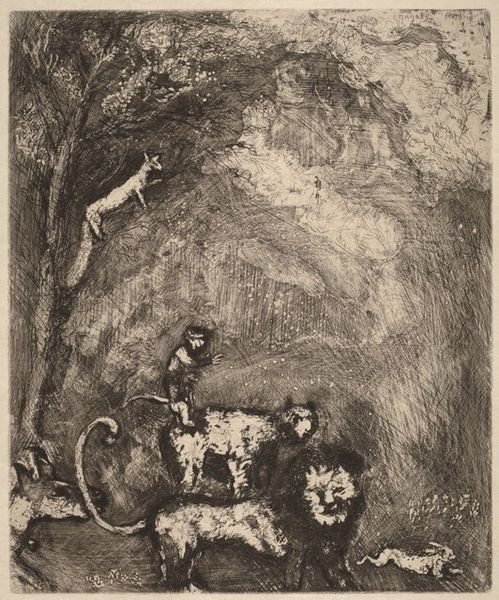
drawing, ink, pen
#
landscape illustration sketch
#
drawing
#
narrative-art
#
pen illustration
#
pen sketch
#
pencil sketch
#
landscape
#
figuration
#
personal sketchbook
#
ink
#
ink drawing experimentation
#
pen-ink sketch
#
pen work
#
sketchbook drawing
#
pen
#
sketchbook art
Dimensions: height 169 mm, width 129 mm
Copyright: Rijks Museum: Open Domain
Editor: Here we have Karel Frederik Bombled’s "Aeddon redt het leven van Kaibar," made sometime between 1852 and 1902. It's an ink drawing and at first glance, it feels like a scene ripped from an epic poem! What do you make of this drawing? Curator: Immediately, my eye goes to the use of ink, specifically how it articulates the social context. Bombled's reliance on readily available and inexpensive materials such as pen and ink democratizes the production of art. Think about the labor involved – the artist, the supplier of ink and paper... what story do these processes tell us? Editor: That’s a good point! It does seem quite accessible. The sketch-like quality suggests a quickness of production, but is that at odds with its narrative? Curator: Not at all. This perceived "quickness" challenges traditional notions of artistic skill requiring years of academic training and access to costly materials like oils. Bombled presents a skillful execution using humble means, blurring the line between high art and everyday craft. Notice the density of lines used to build the narrative – each stroke a conscious decision, a unit of labor. What does that intense cross-hatching in the foreground suggest to you in terms of value and artistic process? Editor: Hmm, maybe it's highlighting the importance of the undergrowth in this story, like it's fundamental, not just background. It seems to contradict classical artistic conventions which favored oil and elevated, sometimes mythological subject matter. Curator: Precisely! Bombled elevates a common material, and by doing so, elevates the potential for the narrative, perhaps making myth accessible. What are you taking away from viewing art through this lens? Editor: I’m appreciating how focusing on materials opens up completely new interpretations about the artist’s intentions and challenges established hierarchies. Curator: Indeed. By scrutinizing the materiality and the means of production, we expose a complex web of relationships that influence and inform the creation and reception of art.
Comments
No comments
Be the first to comment and join the conversation on the ultimate creative platform.
